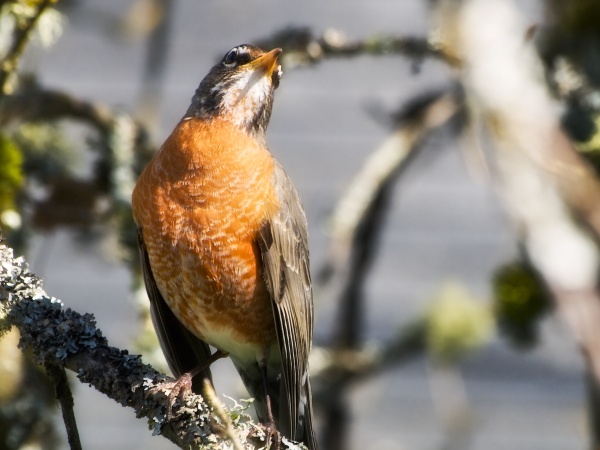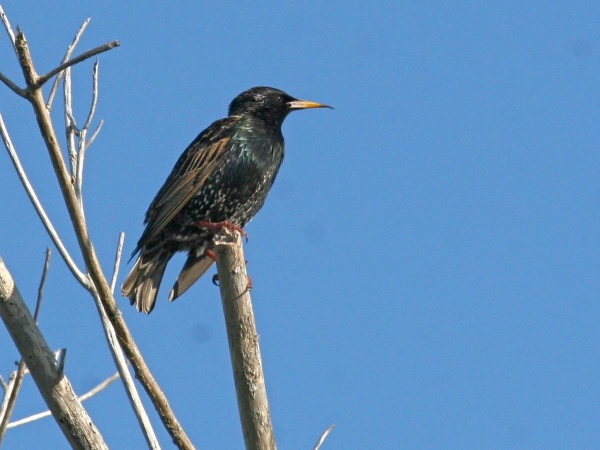
Songbirds are well aware that birds of prey will eat them so they warn each other when they see one. Their warning calls can alert us, too, that a predator is circling overhead.
American robins (Turdus migratorius) stand very still, turn one eye to the sky(*) and make a very thin, high-pitched sound similar to a cedar waxwing’s call. Seet. On the sonogram below it’s shaped like an eyebrow. Here’s what it sounds like:
“American Robin (Turdus migratorius)” from xeno-canto by Paul Driver. Genre: Turdidae.
European starlings (Sturnus vulgaris) make a spitting sound that’s much easier to hear.

They sound off from a safe perch or call “Danger! Danger!” as they take off to avoid the predator. In my experience, they only use this sound when they see danger in the sky. Here’s what it sounds like:
“Common Starling (Sturnus vulgaris)” from xeno-canto by Jarek Matusiak. Genre: Sturnidae.
When you hear these calls, look up to find the hawk. At Schenley Plaza it may be a peregrine falcon.
(*) American robins turn one eye to the sky because they don’t see straight ahead as well as they do side to side. For more information see Anatomy: Field of View.
(photo of American robin by Joel Kluger on Flickr, Creative Commons license. Click on the image to see the original. photo of European starling by Chuck Tague)